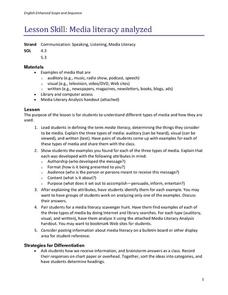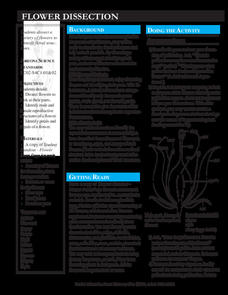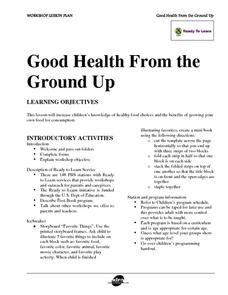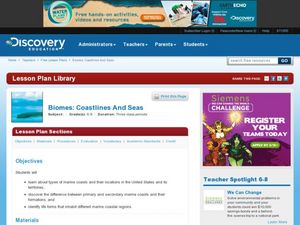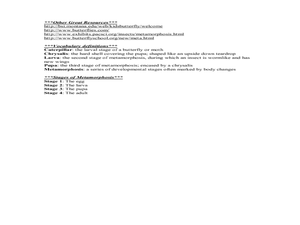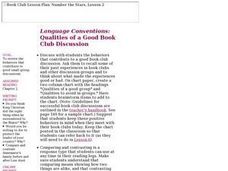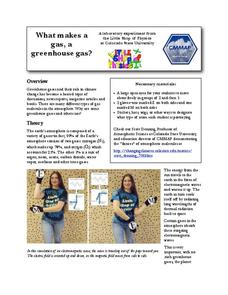Curated OER
Guideline For Book Reports
Students are introduced to the guidelines regarding their upcoming book report. As a class, they brainstorm opening statements to grab the reader's attention and what type of information to present. They must include an evaluation of...
North Carolina Museum of Natural Sciences
Weather Watch Activity Guide: Groundhog Day
Exactly what do groundhogs know about weather? Not as much as your science students will after completing these lessons and activities that cover everything from the earth's rotation and the creation of shadows, to cloud...
Curated OER
Sorting
A lesson on classification and sorting is here for you. Elementary schoolers participate in an interactive computer game in which they sort books by theme. They take a trip to the library to observe and discuss how books are sorted, and...
Curated OER
Hey, Teacher, Leave My Kids Alone
What are the differences between homeschooling, traditional schooling, and unschooling? Middle and high schoolers examine the opinions of their peers on these varied types of education. After reading a New York Times article, they...
Curated OER
Invisible Life
By setting up an aquarium in the classroom, learners are able to describe some macroscopic and microscopic organisms that are found inside. This well-designed, and educationally rich lesson requires pupils to use microscopes to view...
Curated OER
Media Literacy Analyzed
Fourth and fifth graders define the term media literacy, then come up with examples that they share with the class. The types of media studied are auditory, visual, and written. Learners get together in pairs and perform a media...
Curated OER
Flower Dissection
Beginning biologists pull a flower apart and familiarize themselves with the different reproductive structures. Why have them learn only from just a book or diagram when they can examine real samples? There is no link to the referenced...
Curated OER
Everybody Needs a Little Sunshine
Three activities introduce upper elementary ecologists to photosynthesis and food webs. In the first, an experiment is set up to determine how plants respond to different types of light. In the second, they connect organism cards with...
California Polytechnic State University
Australian Geography Unit
At the heart of this resource is a beautifully detailed PowerPoint presentation (provided in PDF form) on the overall physical geography of Australia, basic facts about the country, Aboriginal history, and Australia culture and lifestyle.
Curated OER
Good Health from the Ground Up
Pupils examine healthy food choices and the benefits of growing their own food for consumption. They read the story "Favorite Things" and illustrate 5 favorite things. Students discuss types of foods that are healthy choices and why it...
Curated OER
The Art of Jewelry
Students discover Native American culture through jewelry. In this Native American culture lesson, students investigate several different Native American tribes and complete a word search activity. Students create their own...
Curated OER
Biomes: Coastlines and Seas
Students study the different types of coastlines and their territories. In this marine coasts activity students identify life forms that are in the coastal regions.
Curated OER
Life Cycle of the Monarch Butterfly
Third graders access prior knowledge of the monarch butterfly and discuss what they would like to know. In this Monarch Butterfly lesson,students read Monarch Butterfly and discuss the life cycle of the butterfly. Students gather...
Curated OER
Number the Stars, Lesson 2
Students discuss the qualities of a good book club. They explore the behaviors that contribute to a good book club discussion. Also, they compare/contrast a response type that could be used any time in their reading logs.
Curated OER
Plants are Growing and Changing
Young scholars explore living things. In this agriculture lesson, students read the book A Tree is a Plant and participate in an experiment to explore the patterns of change in living things. Young scholars continue to observe the plant...
Curated OER
Magnets in a Bag
Fifth graders compare and contrast the patterns that they create using iron fillings and different types of magnets.
Curated OER
So Sweet
Students compare sugar levels in cereals. In this nutrition lesson, students learn how to read a nutrition facts label, predict which products will have the most sugar, discover which cereals contain the most sugar and discuss...
Curated OER
Communicating With My World - Day Three: Internet
Students, who are studying ESL, examine the use of web sites. In this web site lesson plan, students watch a teacher demonstration of different types of web sites. They discuss how much time people spend on the Internet. They take a...
Curated OER
Kingdom on Fungi
Students explore various types and characteristics of fungi. In this fungi lesson,students view drawings of how mushrooms grow, examine samples of fungi and complete a handout.
Curated OER
Flicking Football Fun
Young mathematicians fold and flick their way to a deeper understanding of statistics with a fun, hands-on math unit. Over the course of four lessons, students use paper footballs to generate data as they learn how to create line...
Colorado State University
What Makes a Gas, a Greenhouse Gas?—The Carbon Dioxide Dance
Investigate a heated topic in environmental science. Scholars team up to play the parts of gas molecules in the atmosphere. As the teacher moves about, acting as the electromagnetic wave, learners react as their molecules would to the...
Curated OER
Petroglyphs: Protecting the Past
Fourth graders investigate the three types of rocks and study about petroglyphs. They explore why petroglyphs were used by the Nez Perce People. Students investigate the properties of the three types of rocks and they discuss cultural...
Curated OER
Optical Illusions
Students view, identify, and construct four optical illusions. In this optical illusions lesson, students are introduced to four types of optical illusions. They construct their own illusions.
Curated OER
The Clouds Tell All
High schoolers examine the different types of clouds and how they form. They are to create their own weather forecast based on their observations of clouds in their area. Questions are asked for comprehension to end the instructional...





